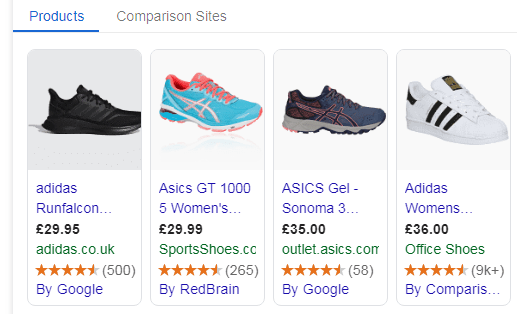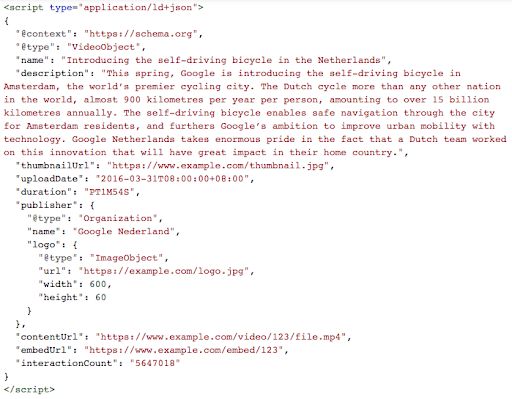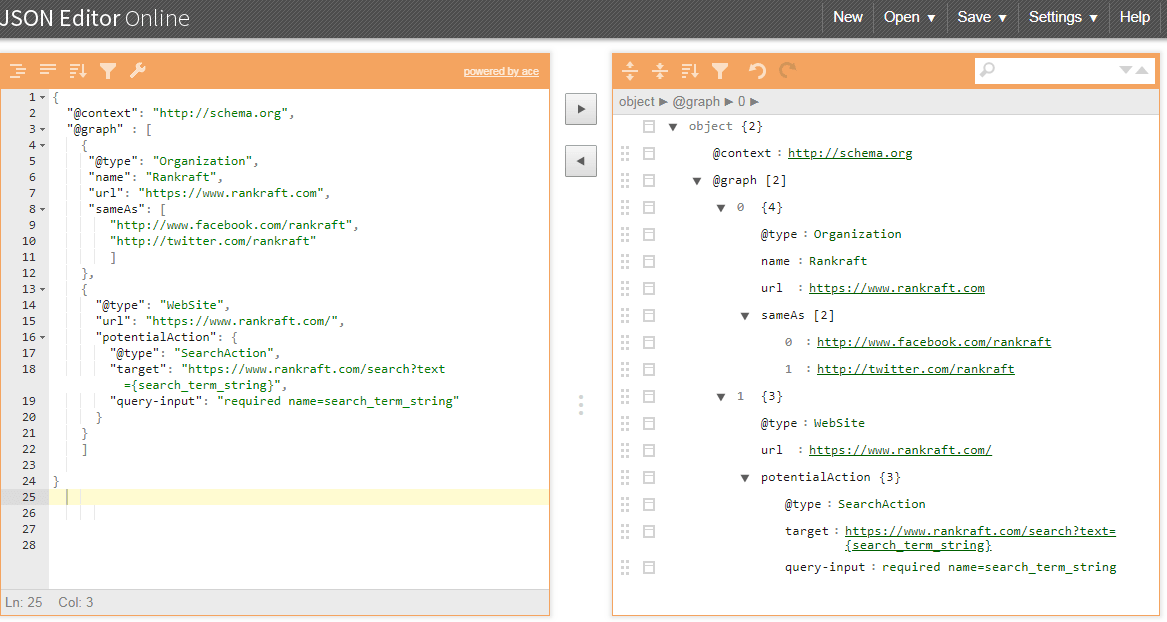8 Ways To Use Structured Data For Your E-Commerce Site
We try all the methods to power up our SEO but, most of the time, forget the important method – schema markup. Schema markup is the most under-used tool in e-commerce, which has the ability to improve the site’s performance over the internet.
Websites that are using schema markup enjoy royal benefits of high ranking on search engine result pages (SERPs).
Do you want your e-commerce website to rank at the top on Google?
Here are 8 useful ways to use structured data that will surely benefit your website.
1. Use Microdata :
You might be unaware of what actually is microdata?
Well, it is used to nest metadata within the existing content of the site. That means, micro-data allows you to add metadata within the body of the webpage content (without microdata, metadata must need to remain in the header of the page) and allows you to give Google more details about the content.
Search engines, web crawlers, and browsers can abstract and process Microdata from a web page and uses it to provide users with a rich browsing experience.
How will you use it?
Example: Suppose you have a header on a page <h2> Blogs </h2> this will be displayed on the page. But, in reality, the page has no idea what the string ‘Blogs’ means. This is where microdata comes into the limelight that lets Google know exactly what your content means. Google now will be able to display your content-rich snippets.
2. Use Review and Product Markup :
Review markup is a technique to increase the click-through rate. Many website owners think that they need to buy third-party apps to collect and display product reviews on their site.
Positive reviews naturally attract more clients, as people always want to be in safe hands. Before making any purchase, people tend to read the reviews of products and if they find satisfying reviews then only they will buy a product. Thus, you can see, a product with positive reviews generally makes more sales. This also increases the credibility and click-through rate of your site.
You can add product reviews by own without using any third-party app.
3. Use a “reviewBody” to Markup Review Text in Review :
Adding reviewBody
{
“@type” : “Review”,
“author” : “Natalie”,
“datePublished” : “2019-07-24”,
“description” : ” The dress I bought is of different color from the pics shown, so now I want to replace it.”,
“name” : “Not a happy buyer”,
“reviewRating” : {
“@type” : “Rating”,
“bestRating” : “5”,
“ratingValue” : “1”,
“worstRating” : “1”
}
},
{
“@type” : “Review”,
“author” : “Sam Dobrik”,
“datePublished” : “2018-25-12”,
“name” : ” A must read book for non-fictional lovers”,
“reviewBody” : “I thoroughly enjoyed reading this book”,
“reviewRating” : {
“@type” : “Rating”,
“ratingValue” : “5”
}
},
In above examples, we have used markup “description” and “reviewBody” and both appear to be a review text, it is your choice to select any one.
We would recommend you to use “reviewBody” for review text as it is a property of Review, on the other hand, “description” is a property of Thing.
* Use of Product Markup on Product Category Pages :
You might have seen a clothing brand’s item displayed on the top of Google in the rich snippet. The snippets also show information about the product to make your buying decision stronger.
So, do you want to showcase your product at the top of Google?
Ok, to bring your product under Google’s spotlight, use product markup. Yes, assigning an efficient schema markup to your products will give them a golden opportunity to get displayed in Google’s rich snippet.
4. Use of Product Availability Schema :

A product availability schema adds a strong impact on your product. This little snippet enables you to show if the product is available in stock or not. Adding this, makes work easy for potential buyers, as they can decide whether or not to view the product, without even clicking on the out-of-stock button. This easy schema tag indicates that you provide the best customer service.
5. Use of Price Attribute :

The price attribute allows customers to compare prices of different brand’s products, without even switching into their respective websites. Thus, there’s no doubt that this is one of the most important schema markups that one must use in his e-commerce site. The price attribute makes sessions easy for the customers while they search for their interested product.
This strategy is used to gain more traffic to your e-commerce store. Also, it is a good way to keep visitors engaged on your site.
The rating markup along with the price attribute is an added advantage. Out of all the options available, which one would you choose?
We believe that of-course the one, with good star ratings and good reviews. These tags are just an easy tactic to attract visitors to your product.

In the above image, notice the price section (Was £45.00 Now £35.00).
This is an amazing way of increasing CTR to your e-commerce store.
Displaying your current sale will increase the likelihood of your page or posts being clicked.
6. Use of Video Schema :
Video is a trending way to entice users to buy your products. Using product videos on e-commerce sites, helps people understand the working and usages of products. This technique is so useful that over 70% of e-commerce stores use product videos on their web pages.
According to a study carried out by Singlegrain, it is found that over 60% of customers watch a product video before actually reading the text.
Just ask your developer to implant the J-SON to markup your video. This will display the video on SERPs.

7. Use of @graph :
Does your single page contain multiple schema tags?
If yes, then instead of using numerous tags, you can use one and place all your structured data types inside of a @graph object.
For example :
“@context”: “http://schema.org”,
“@type”: “Organization”,
“name”: “MilesWeb”,
“url”: “https://www.milesweb.com/”,
“sameAs”: [
“http://www.facebook.com/milesweb”,
“http://twitter.com/milesweb”,
]
}
{
“@context”: “http://schema.org”,
“@type”: “WebSite”,
“url”: “https://www.milesweb.com/”,
“potentialAction”: {
“@type”: “SearchAction”,
“target”: “https://www.milesweb.com/search?text={search_term_string}”,
“query-input”: “required name=search_term_string”
}
}
Using @graph tags
“@context”: “http://schema.org”,”@graph”: [
{
“@type”: “Organization”,
“name”: “Distilled”,
“url”: “https://www.milesweb.com/”,
“sameAs”: [
“http://www.facebook.com/milesweb”,
“http://twitter.com/milesweb”
]
},
{
“@type”: “WebSite”,
“url”: “https://www.milesweb.com/”,
“potentialAction”: {
“@type”: “SearchAction”,
“target”: “https://www.milesweb.com/search?text={search_term_string}”,
“query-input”: “required name=search_term_string”
}
}
]
}
Isn’t it easy?
8. Use of free Online JSON Editor :

The tool that helps with this is a JSON Editor Online. Even if you don’t have the source code editor downloaded, you can just use this tool to make sure that your JSON-LD code is valid and is correctly divided with the tabs without any spaces. The tool is very liable as it immediately shows the errors in your code so that you can fix the errors in the tool soon. Also, the tool is free of weird formatting issues that may occur in word processors such as Google Docs or Microsoft Word, which makes your work easy.
Try it out, and enjoy the results.
Closure :
Structure data types have always been neglected from the SEO point of view, because the users don’t understand its importance. But, if you want to make the most of your e-commerce site, then using schema markups will surely benefit you.

